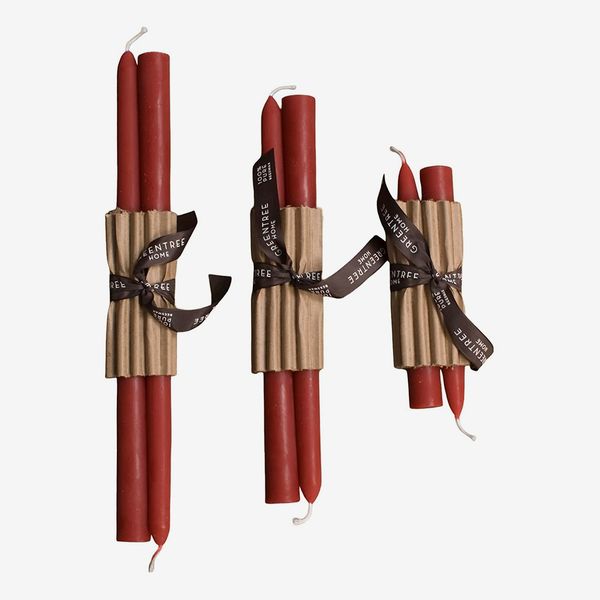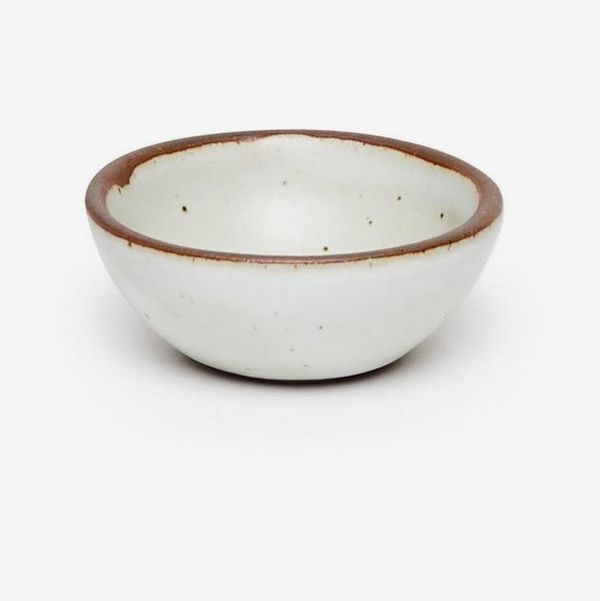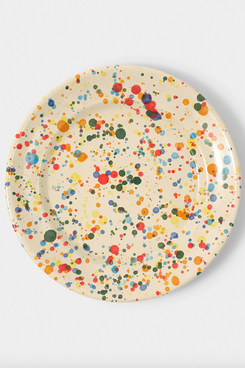
For the past week, we’ve been directing you to the best bowls, cloth napkins, glassware, and more; waxing poetic about serving sets; and getting some of the coolest people we know to give us a glimpse at their tableware. To find the pieces that went into each of these stories, I dug into the rolodex I’ve built over years of being the Strategist’s kitchen and dining writer and reached out to over 50 chefs and recipe developers, home cooks and avid hosts, designers and prop stylists, artists and photographers, and Strategist staffers — all of whom have especially good (and particular) taste.
My main takeaway is that setting your table is a deeply personal task — one that isn’t easily defined by what’s new or trendy (and is, in fact, most successfully done over time). Still, I found some undeniable through-lines among everyone’s recommendations. There’s a big-box store that’s clearly the best for everything from cereal bowls to wineglasses. There’s some ultrathin, easily broken glassware that’s still beloved by many. And surprisingly, even those with the most colorful personal style prefer all-white plates. Here, you’ll find those observations, along with the most-favored pieces from the most-beloved brands, plus the nonnegotiables that dinner-party pros always have on their table.
If you’re going to shop at a big-box store, pick Crate & Barrel.
The brand was far and away the most recommended for its classic-but-not-boring look, reasonable price points, and surprisingly durable goods. Four people I talked to use its plates (the Mercer, Aspen Coupe, Aspen Rimmed, and one out-of-commission style, respectively). Two people own its bowls (the Marin Cereal Bowl for a high-sided option and the Bistro Low Bowls for a lower, wider shape). There were a couple of glassware shout-outs too: the Large Working Glasses for water and the Camille Long Stem Wineglasses, which are “affordable, but with a Lobmeyr vibe,” says fashion writer Rachel Tashjian Wise. (Lobmeyr stemware goes for around $150 each.)
But Sur La Table is also solid.
Two Strategist staffers, senior editor Jen Trolio and writer Lauren Ro, own many pieces from Sur La Table’s Bistro dinnerware line. Trolio registered for hers à la carte in 2010 (several sizes of plates, plus bowls), and Ro bought two full sets (which include mugs) in 2019. Both are still in great shape.
CB2’s Marta glasses break somewhat easily, but they only cost $2.50 a pop.
The reputation of CB2’s Marta glasses, which come in four sizes, is strong. Six people told me the line was one of their favorites (with an additional recommendation for the Optic fluted version). The reason is mostly that thin glass implies luxe. Of course, with thin glass comes more breaking — but at $2.50 a glass, everyone I talked to said if they break, who cares? They’re always in stock and decidedly cheap.
If you want something really durable, go Duralex.
Duralex was the other most popular brand of glassware. Six people recommended the Picardi Tumbler (I own a set of them too), and two people recommended the Gigogne Tumbler. Both styles come in four different sizes. The vessels are as hearty as glass gets: “We’ve had them forever and they rarely (like never) break,” says cookbook author Jessie Sheehan. Still, they look sitting-at-a-café-in-Paris chic.
Tapered candles are a must to set the mood.
The three most popular kinds of tapered candles (both from my survey and interviews over the years reporting on this topic) are listed below. Each comes in a vast range of colors and has garnered praise from several different people.
When you compare Heath vs. East Fork, Heath wins …
The two brands are often compared for their similar understated-but-beautiful look: handmade ceramic pieces in stunning colors, often with a thin unglazed ring around the edge. (They’re also similarly priced.) Truly, both make the kind of timeless tableware you’ll have forever, and both were recommended by multiple people I surveyed, but Heath simply got more numbers, especially its Couple Line plates and bowls.
… Except when it comes to the Everyday Bowl.
At the same time, East Fork’s Everyday Bowl garnered a lot of praise, and it deserves its own shout-out for being such a perfect specimen. It’s giving Sisterhood of the Traveling Pants, in that it’s somehow the ideal shape and size for eating pretty much any meal, from breakfast to dinner (maybe besides that which requires a fully flat bottom for heavy fork-and-knife work, like a steak).
If you want a handmade look without spending a fortune, try Fable.
Two Strategist writers, Jeremy Rellosa and Brenley Goertzen, as well as recipe developer and cookbook author Carissa Stanton, own Fable’s dinner plates, pasta bowls, and cereal bowls, each of which come in a collection of four. They’re not as mass-produced and glossy as the sets from Crate & Barrel and Sur La Table, but they’re also not expensive investment pieces such as those from East Fork and Heath. The matte finish and one-of-a-kind edges and speckling give them a handmade look.
Sabre is the most popular flatware brand.
The French-made forks, spoons, and knives are immediately recognizable for their sleek, straight lines and visible hardware in the handles. The Bistro style, which five people I talked to own, is especially popular. The pieces strike the perfect balance of casual but sophisticated and come in 26 colors.
But if you can only afford a Sabre dupe, these others are a good bet.
Strategist senior writer Liza Corsillo has the George Oliver Kinard Flatware Set, and cookbook author and recipe developer Dan Pelosi has this Ginkgo Lyon International Cutlery Set. They might not be quite as sleek as Sabre, but they have a similar vibe — and cost a fraction of the price.
Woven place mats are better than linen.
I noticed an absence of linen place mats among the recommendations, but woven ones came up several times. Recipe developer and writer Jenny Rosentrach inherited rattan ones from her mother-in-law that are similar to the Crate & Barrel Artesia Round Natural Woven Rattan Place Mats; Anna Polonsky uses these hand-knitted fiber Plaza Bolivar Hilamos Rust Place Mats; and food stylist D’mytrek Brown loves the Expedition Subsahara Safiya Place Mats made from locally harvested elephant grass in Senegal.
Don’t be stubborn: Put salt on the table.
“I have a lot of chef friends who are like, ‘There’s no need for salt on the table. My food is perfectly seasoned,’” says recipe developer and cookbook author Julia Turshen. “But I just feel like everyone likes different things. And I think having that little bit of salt there so you can make it taste exactly right to you — it’s important.” Turshen and eight others always set out shakers or a cellar filled with salt, a few of which are listed below. Big co-sign from me, too.
Splatterware still has it.
It turns out the Splatterware trend is here to stay. Kate Berry, chief creative officer of Domino and contributing editor at Saveur, loves the Cabana Arlecchino Dinner Plate; it includes so many colors that she can get playful with bold linens and glassware to match. But if those are price prohibitive, Strategist contributor Kiki Aranita recommends the similar-enough Felt + Fat Everyday Plate. And if you want single-color Splatterware, Botanica co-owner Heather Sperling loves the Montegranaro Green Splatterware Pasta Dish (Il Buco sells plates with the same design, and I own the mini-bowl set for salt and spices, as seen above).
Still, most people (I’m talking more than 20) prefer white, beige, or cream plates to let the food shine.
You can find their specific recommendations here.
For table linens, the most-recommended brand is Heather Taylor Home.
Four people told me they love Heather Taylor’s tablecloths and napkins (and though I don’t own any myself, I’ve been a distant admirer for years now). The designs are mostly various styles of stripes and plaids, in so many colors, with varying details like scalloped or fringed edges.
Stemmed glasses can be used for water.
Sperling uses the Ferm Living Ripple Wineglasses; recipe developer and cookbook author Andy Baraghani uses the La Rochere Antoine Goblets; Berry uses the Material Kitchen Full Glass Set; and Corsillo uses the Costa Nova Margarida Everyday Recycled Glasses.
But if you want an extremely simple water glass, try one of these flat-bottom, straight-sided options.
The Bormioli Rocco Stackable Bodega Glasses are classic: I own the largest size for water, and Karten and recipe developer and writer Caroline Chambers have them too. While I wouldn’t call them notably expensive, these look-alikes — the Crate & Barrel Bodega Glasses and Threshold Rioja Glasses from Target — are even cheaper.
Low and simple floral arrangements are the way to go.
This isn’t new advice, but several people made a point to say that they prefer low and simple floral arrangements when they set a proper table — that way guests can actually see each other. Chambers loves Heath’s bud vases for this, and Turshen collects vintage glass bottles (which you can find in abundance on Etsy and eBay or IRL at flea markets).
The Strategist is designed to surface useful, expert recommendations for things to buy across the vast e-commerce landscape. Every product is independently selected by our team of editors, whom you can read about here. We update links when possible, but note that deals can expire and all prices are subject to change.




































